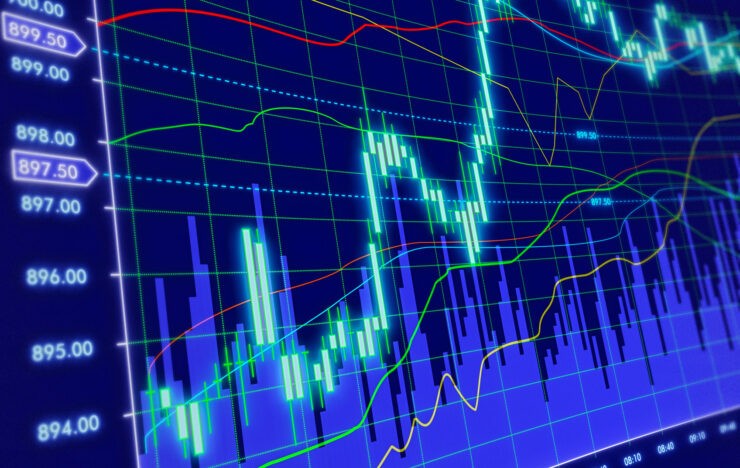Options allow you to speculate on the future price of an asset by paying a small premium. If your prediction comes in, you get to buy or sell the asset at the strike price of the options contract – meaning you make money.
Our Forex Signals
1 - month
Subscription
 Up to 15 signals daily
Up to 15 signals daily 76% success rate
76% success rate Entry, take profit & stop loss
Entry, take profit & stop loss Amount to risk per trade
Amount to risk per trade Risk reward ratio
Risk reward ratiomonth
3 - month
Subscription
 Up to 15 signals daily
Up to 15 signals daily 76% success rate
76% success rate Entry, take profit & stop loss
Entry, take profit & stop loss Amount to risk per trade
Amount to risk per trade Risk reward ratio
Risk reward ratiomonth
 Most popular
Most popular
6 - month
Subscription
 Up to 15 signals daily
Up to 15 signals daily 76% success rate
76% success rate Entry, take profit & stop loss
Entry, take profit & stop loss Amount to risk per trade
Amount to risk per trade Risk reward ratio
Risk reward ratiomonth
Lifetime
Subscription
 Up to 15 signals daily
Up to 15 signals daily 76% success rate
76% success rate Entry, take profit & stop loss
Entry, take profit & stop loss Amount to risk per trade
Amount to risk per trade Risk reward ratio
Risk reward ratioSeparate Swing Trading Group
 Up to 3 signals weekly
Up to 3 signals weekly 76% success rate
76% success rate Entry, take profit & stop loss
Entry, take profit & stop loss Amount to risk per trade
Amount to risk per trade Risk reward ratio
Risk reward ratiomonth
1 - month
Subscription
 Up to 15 signals daily
Up to 15 signals daily 76% success rate
76% success rate Entry, take profit & stop loss
Entry, take profit & stop loss Amount to risk per trade
Amount to risk per trade Risk reward ratio
Risk reward ratiotime
If it doesn’t, you simply lose your premium. As such, options trading is an ideal mechanism to gain exposure to the financial markets in a low risk, high reward manner.
3
Payment methods
Trading platforms
Regulated by
Support
Min.Deposit
Leverage max
Currency Pairs
Classification
Mobile App
Min.Deposit
$100
Spread min.
Variables pips
Leverage max
100
Currency Pairs
40
Trading platforms
Funding Methods





Regulated by
FCA
What you can trade
Forex
Indices
Actions
Cryptocurrencies
Raw Materials
Average spread
EUR/GBP
-
EUR/USD
-
EUR/JPY
0.3
EUR/CHF
0.2
GBP/USD
0.0
GBP/JPY
0.1
GBP/CHF
0.3
USD/JPY
-
USD/CHF
0.2
CHF/JPY
0.3
Additional Fee
Continuous rate
Variables
Conversión
Variables pips
Regulation
Yes
FCA
No
CYSEC
No
ASIC
No
CFTC
No
NFA
No
BAFIN
No
CMA
No
SCB
No
DFSA
No
CBFSAI
No
BVIFSC
No
FSCA
No
FSA
No
FFAJ
No
ADGM
No
FRSA
71% of retail investor accounts lose money when trading CFDs with this provider.
Min.Deposit
$100
Spread min.
- pips
Leverage max
400
Currency Pairs
50
Trading platforms
Funding Methods




Regulated by
CYSECASICCBFSAIBVIFSCFSCAFSAFFAJADGMFRSA
What you can trade
Forex
Indices
Actions
Cryptocurrencies
Raw Materials
Etfs
Average spread
EUR/GBP
1
EUR/USD
0.9
EUR/JPY
1
EUR/CHF
1
GBP/USD
1
GBP/JPY
1
GBP/CHF
1
USD/JPY
-
USD/CHF
1
CHF/JPY
1
Additional Fee
Continuous rate
-
Conversión
- pips
Regulation
No
FCA
Yes
CYSEC
Yes
ASIC
No
CFTC
No
NFA
No
BAFIN
No
CMA
No
SCB
No
DFSA
Yes
CBFSAI
Yes
BVIFSC
Yes
FSCA
Yes
FSA
Yes
FFAJ
Yes
ADGM
Yes
FRSA
71% of retail investor accounts lose money when trading CFDs with this provider.
Min.Deposit
$50
Spread min.
- pips
Leverage max
500
Currency Pairs
40
Trading platforms
Funding Methods




What you can trade
Forex
Indices
Actions
Raw Materials
Average spread
EUR/GBP
-
EUR/USD
-
EUR/JPY
-
EUR/CHF
-
GBP/USD
-
GBP/JPY
-
GBP/CHF
-
USD/JPY
-
USD/CHF
-
CHF/JPY
-
Additional Fee
Continuous rate
-
Conversión
- pips
Regulation
No
FCA
No
CYSEC
No
ASIC
No
CFTC
No
NFA
No
BAFIN
No
CMA
No
SCB
No
DFSA
No
CBFSAI
No
BVIFSC
No
FSCA
No
FSA
No
FFAJ
No
ADGM
No
FRSA
71% of retail investor accounts lose money when trading CFDs with this provider.
With that said, trading options is a lot more sophisticated than buying and selling traditional asset classes – so it’s important that you know what you are doing prior to parting with your money.
This is why we suggest reading our Learn 2 Trade 2023 Guide On Options Trading. Within it, we explain the ins and outs of how options trading works, what you need to look out for before purchasing a contract, and crucially – how you can make money in the space.
Note: You need to ascertain whether you are trading American options or European options. If it’s the former, you can exit your trade before the contract expires. If it’s the latter, you can’t.
Eightcap - Regulated Platform With Tight Spreads

- Minimum deposit of just 250 USD to get lifetime access to all the VIP channels
- Use our Secure and Encrypted Infrastructure
- Spreads from 0.0 pips on Raw Accounts
- Trade on the Award-Winning MT4 & MT5 Platforms
- Multi-jurisdictional Regulation
- No Commission Trading on Standard Accounts

What are Options?
Before we explore how the trading process works, we first need to discuss what options actually are. In a nutshell, options allow you to speculate on the future direction of an asset without you taking immediate ownership. Instead, options give you the right, but not the obligation, to buy or sell the asset at a later date. This is in stark contrast to futures, as you are legally required to take ownership once the contract expires.
This became evident in April 2021 when the price of oil futures went negative, as those holding the contracts did not have the logistical capacity to take delivery! In the case of options, once you pay a small ‘premium’, you gain access to the market. The overarching aim is for your asset to go above or below the ‘strike price’ before the options contract expires. For example, let’s say that you pay a $100 premium to purchase 100 IBM stock options.

At the other end of the spectrum, had IBM stock closed at a price below $150, then you would have your $100 premium. Although you made a loss, you were able to speculate on the future direction of a stock without needing to purchase whole shares. In fact, you can purchase options contracts on virtually any asset class. This includes everything from indices, energies, hard metals, ETFs, and cryptocurrencies. As we cover in more detail later, you will need to use a regulated online broker to access the options trading space.
Pros and Cons of Options Trading
- You have the right, but not obligation to purchase an asset at a later date
- Options can facilitate low risk, high return investments
- Ability to long or short an asset
- Apply leverage to boost your trade sizes
- Hundreds of regulated options trading brokers to choose from
- Get started with a debit/credit card or e-wallet
- Trade on the move via a broker app
- Most newbie options traders lose money
- You need to be able to handle the emotional side effects of losing trades
Understanding Options Trading – The Basics
Unlike the traditional trading space – where you simply need to buy an asset and hope to sell it for more at a later date, options trading is a lot more complex. With that in mind, we are going to guide through the process step-by-step.
✔️ Call Options and Put Options
To get the ball rolling, you first need to determine which way you think the asset will move in the markets. In the world of options trading, you will either need to buy a ‘call option’ or ‘put option’.
In its most basic form, if you think that the asset will increase in price, then you will need to buy a call option. This is the same as placing a ‘buy order’ in the traditional investment space, meaning that you are going ‘long’ on the asset.
Alternatively, if you think that the asset will go down in value, you will be required to buy a ‘put option’. In the traditional trading space, this is the same as placing a ‘sell order’, meaning you are going ‘short’ on the asset.
✔️ Strike Price
Once you have decided whether you want to place a call or put option, you then need to assess the strike price of the asset. In the case of options trading, this is the price that will determine whether or not your trade is successful. For example, let’s say that the strike price on Apple stock is $280.
If you place a call option, this means that you need Apple stocks to close at a higher price than $280 when the contract expires. If you placed a put option, then you would need the price to sit below the $280 strike price
Options brokers usually give you multiple strike prices to choose from. This will impact the size of the premium that you are required to put up. In other words, as the likelihood of your prediction coming to fruition increases, as will the premium.
✔️ Expiry
In a similar nature to futures contracts, options will always have an expiry date. This is the date that you will be able to exercise your right to buy or sell the asset. In the traditional options trading space, the expiry date is usually set for the third Friday of each month.
However, by using an online broker you will have much more flexibility. In fact, options contracts start from just 1 day, right up to a full year.
✔️ Premium
In order to access the options market in question, you will need to pay a premium upfront. This operates like a non-refundable deposit. In other words, if your prediction is correct, you’ll need to subtract the premium from your return.
For example, if you paid a $200 premium to access the market, and your trade netted $500 in gains, your actual profit is $300. If your options trade didn’t end up in the money come expiry – you simply lose the premium.
In terms of the size of the premium required, this will depend on a number of variables. This includes both the current market price and strike price of the asset, when the contract expires, and whether the asset pays dividends or interest.
With that being said, the premium will often sit within the 5-10% range of the asset’s price.
Let’s look at a quick example based on a premium of 5%
- You think that Amazon stocks will go on an upward trend in the coming weeks
- As such, you decide to buy a call option
- The current market value of Amazon stock is $2,300
- The strike price on the options contract is $2,500
- The contract will expire in 2 months
- At 5% of $2,300, your premium amounts to $115
If Amazon closed in two months time at $2,700 – this would amount to $200 above the strike price. Less your $115 premium, this would leave you with $85 profit per share.
Crucially, you likely won’t be able to purchase just one share, as options broker typically install minimum lot sizes – which we cover below.
✔️ Minimum Lot Size
In the example that we gave above on Amazon stocks, we based our profits on a single share. However, most options brokers will ask you to purchase a minimum lot size. In the traditional options space, this is usually 100 contracts. This isn’t always the case though – especially if you are trading an asset that carries a much larger value.

- Let’s say that you wish to buy call options on Disney stock, which currently has a market price of $100
- The strike price is $107 and the options expire in 30 days
- The premium on the call options is 7% of the current market price – which amounts to $7
- The broker requires a minimum lot size of 100 contracts
- This means that you need to pay a total premium of $700
Let’s then say that the options land in the money, with Disney stocks priced at $125 when the contracts expire in 30 days. This amounts to a price of $18 above the strike price of $107. As you hold 100 contracts, this equates to $1,800 in gains. Once you subtract the $700 premium that you paid upfront, this leaves you with $1,000 in profit.
Options Trading: What Assets Can I Trade?
So now that you have a general idea of how options works, we are now going to explore some of the many assets that you can trade.
This includes:
Stocks: The most popular asset class to trade options is that of traditional blue-chip stocks. Most brokers will give you access to several markets – including that of the NASDAQ, NYSE, and LSE.
Indices: You will also have the capacity to buy call and put options in the wider stock markets. Known as indices (or indexes), this includes the Dow Jones, NASDAQ 100, FTSE 100, and the S&P 500.
Currencies: It’s possible to buy and sell options in the forex industry. This would be based on a specific currency pair like AUD/USD or GBP/USD.
Commodities: Options are a great way to gain exposure to the multi-trillion dollar commodities space. This includes gold, oil, gas, silver, wheat, sugar, and corn. In fact, producers often purchase options contracts to hedge against current market prices.
ETFs: You can also buy options in the ETF (Exchange Traded Fund) space. ETFs track a wide range of assets – from real estate, to gold, to retail stocks.
Cryptocurrencies: A small number of platforms now allow you to trade options on Bitcoin. However, there is no regulated marketplace for this yet – so tread with caution.
If you are using a specialist options trading site, then you will likely have access to thousands of markets. This allows you to create a diversified options trading strategy at the click of a button.
Options Trading for Hedging
The purpose of trading options is two-fold. As we have uncovered throughout our guide thus far, the overarching objective of buying call and put options is to speculate on the future price of an asset. In doing so, you hope to make a profit.
However, options trading is also a highly effective mechanism for hedging. In fact, this is exactly what commodity suppliers do to hedge against the current market price of their asset. For example, if corn farmers are currently benefiting from an above-average market price, they might decide to buy put options.

This is also the case for those invested in the financial markets. For example, let’s say that you hold $10,000 worth of Amazon stocks. You feel that a global recession is impending, so you want to protect your portfolio. As such, you purchase put options.
American vs European Options
There are two main types of options available in the investment arena – American options and European options. The one that you purchase will determine when you can exercise your right to buy or sell the underlying asset.
American Options Trading
American options allow you to exit your options trade at any point between the moment you pay the premium, and the date in which the contracts expire.
For example, if the options expire on July 1st 2021, you can exercise your right to buy or sell the asset any time before this date. This is highly beneficial for you as an options trader, as you have the ability to lock-in your profits well before the contracts expire.
Let’s look at a quick example.
- You have purchased call options on oil at a strike price of $33 dollars per barrel
- The options will expire on August 14th 2021, and you have 100 contracts
- You paid a premium of just $1.30 per contract
- On August 4th, the price of oil is at $45 per barrel, which is $12 higher than the strike price of $33
- As such, you decide to cash in your American options by exercising your right to buy the asset
- You have 100 contracts, you made $12 per contract – less the $1.30 premium, so your overall profit is $1,070.
As you can see from the above example, the trader was able to lock-in their profits 10 days before the options expired. Nobody knows whether or not this was a shrewd move until the expiry date of August 14th. For example, if the price of oil closed at $50 per barrel, the trader missed out on higher returns.
At the other end of the spectrum, the price of oil could have crashed below the strike price of $33, meaning they would have lost their premium, and made no profit at all!
European Options Trading
Unlike American options, European options do not allow you to exercise your right to buy or sell the asset before the options expire. In the example above, we noted how the trader was in the money 10 days before the expiry date.
However, if the purchase was made via a European options contract, the investor would not have been able to cash in their profits early. On the contrary, they would need to wait until August 14th to see what price oil closed at.
On the one hand, this puts you at a disadvantage against American options, as you don’t have the flexibility of locking in your gains early. On the other hand, European options typically come with a much lower premium price, so you need to take this into account.
Difference Between Options Trading and Binary Options
On top of the traditional options trading space, you might also come across ‘binary’ options. Although there are some similarities between the two, they are actually completely different asset classes.
Crucially – and as the name suggests, binary options have just two potential outcomes. You will either win a fixed amount of money on the trade, or you lose your entire stake. For example, if the win percentage ratio on the binary options is 70%, and you stake $1,000, then you would win $700 for landing in the money.
If the strike price was $40, it wouldn’t matter if the asset closed at $41, $100, or $5,000 – you would still win the same amount. If the asset doesn’t land in the money, you simply lose your $1,000 stake.
As a result, we would opt against binary options trading, as your earning potential is capped. On the contrary, there is no limit to the amount you can earn from traditional options trading. This is because the greater the gap between the strike price and closing price of your trade, the more profit you make.
How to Start Options Trading Today
So now that you know how options trading works, we are now going to show you how you can get started with an investment today. By following the steps outlined below, you could have a put or call option live in the market in less than 10-15 minutes!

Step 1: Choose an Options Trading Site
The first step that you need to undertake is to choose an options trading site that meets your needs. You’ll need to engage in a lengthy research process, as no-two brokers are the same.
This should include key metrics like:
Regulation: Ensure the options trading site is regulated by a tier-one licensing body. Examples include the FCA (UK), CySEC (Cyprus), and ASIC (Australia).
Tradable Assets: Explore what asset classes the options trading sites offers. The best platforms will give you access to thousands of markets.
Payment Methods: Opt for an options trading site that allows you to deposit and withdraw funds with your preferred payment method.
American or European: Ensure you understand the underlying make-up of the options. More specifically, does the broker host American options, European options, or a combination of the two?
Premium vs Strike Price: You need to assess how competitive the options trading site is when it comes to the premium. In other words, how high is the premium in relation to the strike price?
Customer Support: Explore what customer support channels the options trading site offers. This will come in handy if you need the broker to explain how your chosen market works.
If you don’t have time to research the metrics listed above, we would suggest using one of the three brokers that we have recommended on this page. All of our top-rated platforms are heavily regulated, offer heaps of options markets, and allow you to instantly deposit funds with a debit/credit.
Step 2: Open Account and Upload ID
Once you have found a suitable options trading site, you’ll need to open an account. The broker will ask you to provide some personal information, such as your:
- Full Name
- Date of Birth
- Home Address
- National Tax Number
- Residency Status
- Mobile Number
- Email Address
The broker will also need to see a copy of your government-issued ID. This is to ensure the platform remains compliant with anti-money laundering laws. As such, upload a copy of your passport or driver’s license.
Step 3: Fund Your Options Trading Account
In order to access the options trading markets, you will need to pay a premium to the broker. As such, you now need to fund your trading account. Most, but not all, brokers will have a minimum deposit threshold that you will need to meet.
In terms of payment methods, this often includes:
Apart from the bank account option, all other deposit options are instant.
Step 4: Find Options Market to Trade
Now that you have funded your options trading account, you will now need to find a market to trade. Brokers typically offer thousands of markets, so search for an asset that you are interested in.
Once you do, you will need to evaluate the following metrics:
- The current market price of the asset
- The strike price of the asset
- The premium required by the broker
- When the options contract expires
- Minimum lot size
- Whether the options are European or American
You will often get to choose from multiple markets on a single financial instrument. For example, if you are looking to trade Nike stocks, the broker might offer various strike prices – each of which carries a different premium requirement.
Step 5: Buy a Call or Put Option
Once you have assessed the options market offered by the broker, you will then need to place a trade. As such, decide whether you think the asset will increase (call option) or decrease (put option) against the strike price.
You will then need to enter the number of contracts that you wish to buy – ensuring that you meet the minimum lot size. The total stake figure will update as you enter the number of contracts into the order box.
For example, let’s say you want to buy call options on Nike stocks, which carries a premium of $4 per stock. As you enter ‘200’ into the amount box, the stake will change to $800 ($4 premium x 200 contracts).
Finally, complete the order. Once you do, your options trade is live!
Best Options Trading Sites in 2023
Looking for the best options trading sites of 2023, but don’t have time to research a broker yourself? Below you will find our top three picks. Each of the following brokers are licensed by tier-one bodies, allow you to easily deposit funds with a debit/credit card, and crucially – offer thousands of markets.
1. AVATrade – 2 x $200 Forex Welcome Bonuses
The team at AVATrade are now offering a huge 20% forex bonus of up to $10,000. This means that you will need to deposit $50,000 to get the maximum bonus allocation. Take note, you'll need to deposit a minimum of $100 to get the bonus, and your account needs to be verified before the funds are credited. In terms of withdrawing the bonus out, you'll get $1 for every 0.1 lot that you trade.

- 20% welcome bonus of upto $10,000
- Minimum deposit $100
- Verify your account before the bonus is credited
2. City Index – Most Extensive Options Trading Department
If you're looking to create a diversified portfolio of options contracts, it might be worth considering City Index. The online broker offers a highly extensive list of options markets, including everything from stocks, commodities, and indices. You can get started with an account in minutes, with minimum deposits starting at £100. The platform is heavily regulated, with licenses including the UK's FCA.

- Top-notch customer support team
- Easy account opening process
- Excellent reputation in the traditional brokerage scene
- KYC process is a bit cumbersome
3. CMC Markets - Options Trading Site With Risk Management Tools
Launched in 1989, CMC Markets gives you access to thousands of markets - including that of the options space. We like the broker for its offering of risk management tools, which helps mitigate your losses in the event of losing trade. CMC Markets does not employ a minimum deposit amount, and you can load your account with a debit/credit card or bank account.

- Thousands of financial markets supported
- Risk-free demo accounts
- Listed on the London Stock Exchange
- More suited to advanced traders
Conclusion
Options trading allows you to gain exposure to thousands of markets without you needing to purchase the underlying asset outright. Whether you believe the asset will go up or down in the markets, you simply need to purchase a small premium.
In doing so, you stand the chance of making uncapped returns in a risk-averse manner. With that said, you still need to have a firm understanding of how the options trading arena works – so we hope our guide has helped clear the mist.
We’ve also discussed our three top-rated options trading sites of 2023, alongside a handy step-by-step on how you can get started today. As such, by using one of our recommended platforms you could have a call/put options contract live in the market within minutes!
AvaTrade - Established Broker With Commission-Free Trades

- Minimum deposit of just 250 USD to get lifetime access to all the VIP channels
- Awarded Best Global MT4 Forex Broker
- Pay 0% on all CFD instruments
- Thousands of CFD assets to trade
- Leverage facilities available
- Instantly deposit funds with a debit/credit card

FAQs
What is options trading?
What is the minimum deposit at options trading sites?
How does the 'premium' work in options trading?
Are options trading sites regulated?
What is the difference between American and European options?
Can you apply leverage when trading options?
How do I fund my options trading account?

